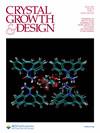Lattice Polarity Manipulation of AlN Films on SiC Substrates for N-Polar GaN HEMTs
IF 3.2
2区 化学
Q2 CHEMISTRY, MULTIDISCIPLINARY
引用次数: 0
Abstract
Realization of nitrogen-polar (N-polar) AlN on SiC is important for the development of high-performance GaN high-electron mobility transistors (HEMTs). However, AlN films grown on SiC substrates are mostly metal-polar, and it is difficult to achieve an N-polar AlN on them. In this work, we manipulated the lattice polarity of AlN grown on SiC by varying the V/III ratio. Our results show that AlN films grown at a low V/III ratio undergo lattice polarity reversal from N-polarity to metal-polarity near the AlN/SiC interface. This occurs because oxygen enrichment occurs in AlN, forming a thin AlON layer close to the interface. Importantly, we suppress the oxygen enrichment and thus the formation of AlON in AlN under a high V/III ratio, i.e., an N-rich growth condition, and finally achieve an N-polar AlN film on SiC. We also find that the threshold V/III ratio that realizes N-polar AlN on SiC without lattice polarity reversal is ∼6000. Furthermore, we prepared a GaN/AlGaN HEMT structure based on the obtained N-polar AlN, and the 2-dimensional electron gas density and mobility at the heterostructure interface are 1.5 × 1013 cm–2 and 923 cm2/V·s, respectively. This work is expected to promote the development of N-polar GaN HEMTs on SiC.

利用晶格极性操纵碳化硅基板上的氮化铝薄膜,制造 N 极氮化镓 HEMT
在碳化硅(SiC)上实现氮极性(N-polar)AlN 对于开发高性能氮化镓高电子迁移率晶体管(HEMT)非常重要。然而,在碳化硅衬底上生长的 AlN 薄膜大多是金属极性的,因此很难在其上实现氮极性 AlN。在这项工作中,我们通过改变 V/III 的比例来操纵在 SiC 上生长的 AlN 的晶格极性。我们的研究结果表明,以低 V/III 比率生长的 AlN 薄膜在 AlN/SiC 界面附近会发生晶格极性反转,从 N 极性转变为金属极性。出现这种情况的原因是 AlN 中出现了氧富集,在靠近界面的地方形成了一层薄薄的 AlON 层。重要的是,在高 V/III 比(即富含 N 的生长条件)下,我们抑制了 AlN 中的氧富集,从而抑制了 AlON 的形成,最终在 SiC 上形成了 N 极 AlN 薄膜。我们还发现,在 SiC 上实现无晶格极性反转的 N 极 AlN 的阈值 V/III 比为 ∼ 6000。此外,我们基于所获得的 N 极 AlN 制备了 GaN/AlGaN HEMT 结构,异质结构界面上的二维电子气体密度和迁移率分别为 1.5 × 1013 cm-2 和 923 cm2/V-s。这项工作有望推动氮化镓 HEMT 在碳化硅上的发展。
本文章由计算机程序翻译,如有差异,请以英文原文为准。
求助全文
约1分钟内获得全文
求助全文
来源期刊

Crystal Growth & Design
化学-材料科学:综合
CiteScore
6.30
自引率
10.50%
发文量
650
审稿时长
1.9 months
期刊介绍:
The aim of Crystal Growth & Design is to stimulate crossfertilization of knowledge among scientists and engineers working in the fields of crystal growth, crystal engineering, and the industrial application of crystalline materials.
Crystal Growth & Design publishes theoretical and experimental studies of the physical, chemical, and biological phenomena and processes related to the design, growth, and application of crystalline materials. Synergistic approaches originating from different disciplines and technologies and integrating the fields of crystal growth, crystal engineering, intermolecular interactions, and industrial application are encouraged.
 求助内容:
求助内容: 应助结果提醒方式:
应助结果提醒方式:


